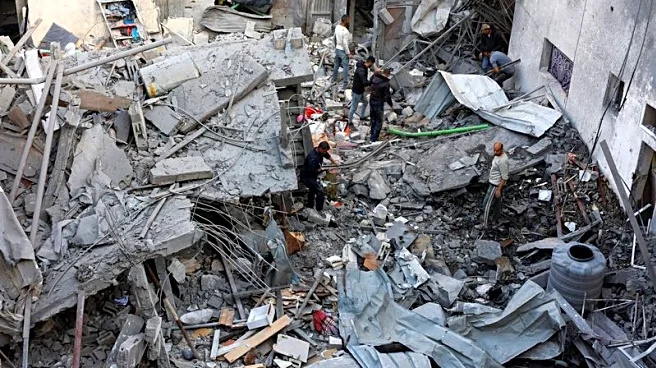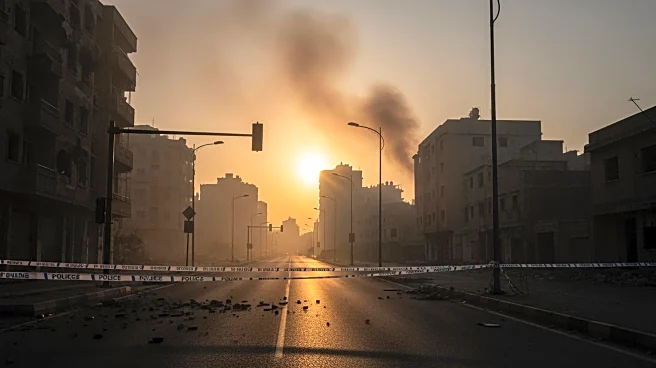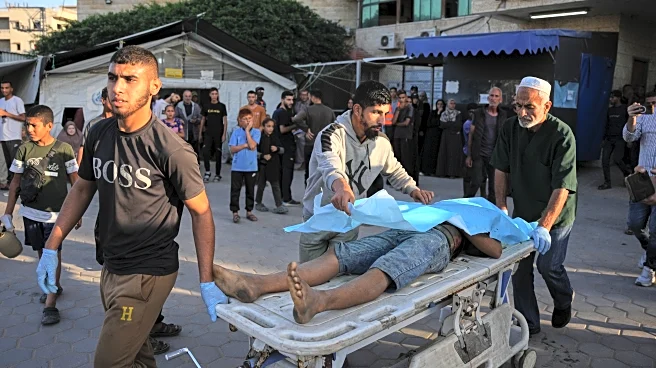What's Happening?
The Gaza Humanitarian Foundation (GHF), a US- and Israel-backed organization, has announced the closure of its operations in Gaza following a ceasefire. The foundation, which began distributing aid in late
May, faced challenges as desperate Palestinians rushed to secure limited food supplies. Despite plans to expand, GHF suspended operations in mid-October, reverting to the United Nations for aid distribution. The foundation claims to have delivered over 187 million meals, but the chaotic distribution led to tragic incidents, with over 2,100 Palestinians killed while seeking aid. The US State Department acknowledged GHF's contributions, noting its role in facilitating the ceasefire by preventing Hamas from looting aid.
Why It's Important?
The closure of GHF highlights the complexities of humanitarian aid in conflict zones. The foundation's approach aimed to prevent aid diversion by Hamas, contributing to ceasefire negotiations. However, the chaotic distribution underscores the challenges of delivering aid in volatile environments. The reliance on the United Nations for aid distribution may streamline efforts but also raises questions about the effectiveness of alternative models. The tragic loss of life during aid distribution emphasizes the urgent need for secure and efficient humanitarian operations in Gaza.
What's Next?
With GHF's closure, the focus shifts to the United Nations as the primary distributor of aid in Gaza. This transition may lead to more organized and secure aid delivery, potentially reducing chaos and loss of life. However, the situation remains fragile, and ongoing monitoring by international stakeholders is crucial. The lessons learned from GHF's operations could inform future humanitarian strategies in conflict zones, emphasizing the need for secure distribution channels and collaboration with local entities.














